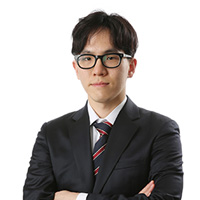Exhibit sheds light on ancient confederacy of Gaya
National Museum puts together archeological findings since ’90s for better understanding of era
By Shim Woo-hyunPublished : Dec. 3, 2019 - 17:26
The National Museum is holding an exhibition on Gaya, an ancient confederacy of small city-states in the central-southern region of the Korean Peninsula around AD 42-562.
Titled “Gaya Spirit -- Iron and Tune,” the exhibit comprises archeological findings of the past three decades, shedding light on the entity, which has often been overlooked in history due to the more powerful three kingdoms -- Baekje, Silla and Goguryeo -- that thrived on the peninsula in Gaya’s last centuries.
Titled “Gaya Spirit -- Iron and Tune,” the exhibit comprises archeological findings of the past three decades, shedding light on the entity, which has often been overlooked in history due to the more powerful three kingdoms -- Baekje, Silla and Goguryeo -- that thrived on the peninsula in Gaya’s last centuries.

On display are some 2,600 artifacts from 31 institutions here and abroad, including the Tokyo National Museum and Leeum, Samsung Museum of Art. The items include iron armor, pottery, swords and accessories including gold crowns.
The exhibition starts with a “clay horse bell with tortoiseshell design,” which connects to Suro, the mythical founder of Geumgwan Gaya, the most powerful state of the confederacy. Standing next to it in an open hall is the “Pasa” stone pagoda, which Heo, Suro’s foreign-born wife, is believed to have brought from her native land.
The exhibition deals heavily with what Gaya is best known for -- ironware. The vast collection of iron weapons and armor offers a glimpse into the foundry skills that Gaya developed.
It also introduces new findings of tumuli where Gaya’s kings and aristocrats were buried, which add more details to Gaya’s geographical presence in the region.
“Recent archeological findings of tumuli in the region indicate that the territory of Gaya reached further than it was written in ‘Samguk Yusa (Memorabilia of the Three Kingdoms),’” National Museum curator Yi Yang-su said.


In “Samguk Yusa,” Gaya is described as a confederacy of five territorial polities. But Gaya-style tumuli have also been found in Namwon in North Jeolla Province and Suncheon in South Jeolla Province, suggesting that the confederacy may have included additional polities not mentioned in the work
Burial accessories and pottery excavated from the tumuli show the diversity that existed in the confederacy, according to the museum.
The Tokyo National Museum’s collection of earrings, swords and pottery offers a glimpse into Gaya’s active commerce with cities in Japan, according to the museum.
The ongoing exhibition is the second by the National Museum that spotlights the Gaya heritage. The previous one was in 1991 and featured some 1,000 objects.
During the nearly three decades in between, major progress has been made in the country’s understanding of Gaya, due largely to excavation projects that began in the 1990s, the National Museum explained.
After several lucky findings of archeological sites and artifacts during major construction projects in the southern region, researchers have continued to search for more clues on Gaya.
One of the major excavation sites was the Gimhae Daeseong-dong Tumuli in South Gyeongsang Province, which was put on the tentative list of UNESCO World Heritage Sites.
Better understanding of Gaya history is one of the priority projects of the current administration.
The exhibition runs through March 1 next year. It will then tour to the Busan Museum, the National Museum of Japanese History in Sakura, Japan, and the Kyushu National Museum in Dazaifu, Japan, timed to coincide with the 2020 Tokyo Olympic Games.
By Shim Woo-hyun (ws@heraldcorp.com


















